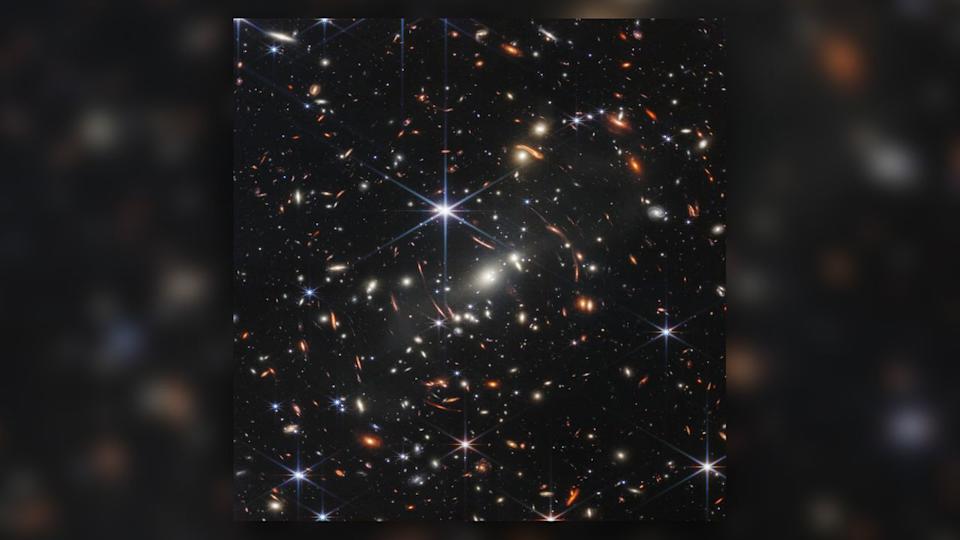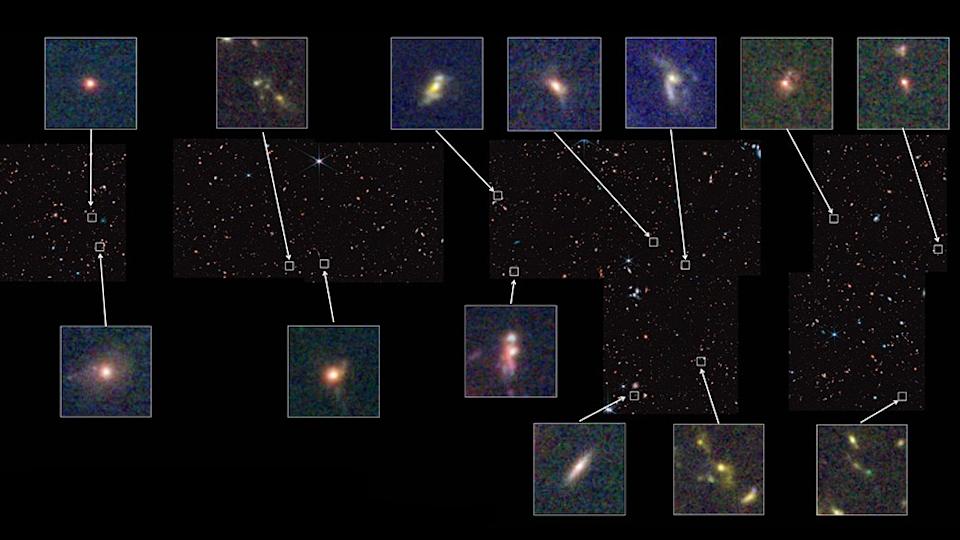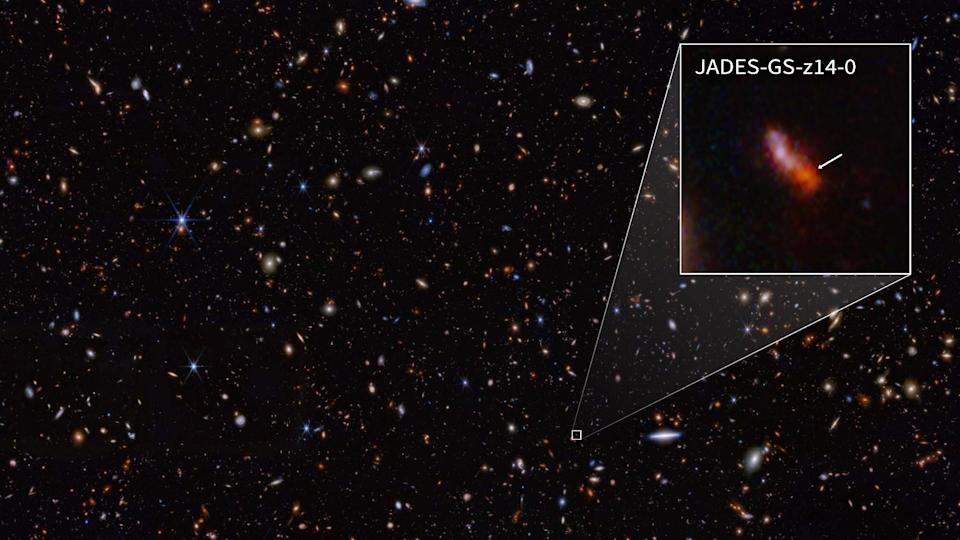When you buy through links on our articles, Future and its syndication partners may earn a commission.

The world's first telescope, crafted in 1608 by the Dutch eyeglass maker Hans Lippershey, led to stunning technologies that would later revolutionize our understanding of the universe. While his telescope used simple lenses to magnify objects to about three times their size, later scientists built on this concept to peer into the depths of outer space.
But some telescopes are more powerful than others, enabling us to spot distant stars and galaxies and allowing researchers to study extreme phenomena like black holes and Einstein rings. So, what's the most powerful telescope, and how far can it see into space?
The answer isn't surprising to anyone familiar with today's headlines: The most powerful telescope is presently the James Webb Space Telescope (JWST), which was launched in December 2021 to detect infrared and near-infrared wavelengths, or wavelengths on the electromagnetic spectrum that are invisible to humans but can be felt as heat. Its predecessor and cousin, the Hubble Space Telescope, was primarily designed to detect visible-spectrum light and ultraviolet light, a wavelength that is often emitted by young stars.
In space, many objects do not produce or reflect enough visible-spectrum light to see with the naked eye or to detect from far away. However, infrared light stretches so long that it is easier to detect from vast distances. The long wavelengths even have the benefit of piercing through clouds of dust, making them particularly compelling for astronomers hoping to peer into the deepest depths of the universe.
Even the powerful new Vera C. Rubin Telescope, recently activated in Chile, can't see this far into space because it has to contend with anomalous obstructions such as dust.
When the universe began, it was condensed into a hot mash of particles (protons, neutrons and electrons). As the universe expanded and cooled, the first stars and galaxies began to coalesce. The earliest of these we can see are around 13.7 billion years old, which is just a little over a hundred million years after the Big Bang.
Related: How many galaxies orbit the Milky Way?
"The James Webb Space Telescope has proven itself capable of seeing 98% of the way back to the Big Bang," Peter Jakobsen, an affiliate professor of astrophysics at the University of Copenhagen in Denmark, told Live Science in an email. "This exceeds the hopes and expectations of most of us involved in the early planning of the James Webb Space Telescope."

How does the JWST see so far?
Much of the power behind the JWST comes from its large primary mirror, Carol Christian, an astrophysicist at the Space Telescope Science Institute in Baltimore, told Live Science via email.
JWST's primary mirror measures 21.3 feet (6.5 meters) in diameter, giving it a total collecting area of more than 270 square feet (25 square m). In contrast, Hubble's primary mirror is 8 feet (2.4 m) in diameter and has a collecting area of nearly 50 square feet (4.5 square m). However, both telescopes can see billions of light-years away because they are in space, well beyond the obscuring haze of Earth's atmosphere.
Sign up for our newsletter

Sign up for our weekly Life's Little Mysteries newsletter to get the latest mysteries before they appear online.
However, JWST is also equipped with infrared light detectors situated to absorb light redirected from its large mirrors that help it identify distant light that Hubble cannot see.
Meanwhile, Earth's atmosphere creates unique problems for terrestrial telescopes. These problems range from light pollution to "atmospheric turbulence," which is the random movement of air. Such factors can blur and distort images and limit a telescope's ability to see deeply into space. Space, on the other hand, is darker and free of these problems, so many of our strongest telescopes are placed well beyond Earth's atmosphere.
In the case of James Webb, the telescope sits at a vantage point nearly 1 million miles (1.5 million kilometers) from Earth at a Lagrange point, or a point that has just the right gravitational balance for satellites to stay stable in orbit.

How far can the James Webb Space Telescope see?
When we look at the night sky, we're essentially looking back in time. Light travels 299,792,458 meters per second (186,282 miles per second), which means the light that reaches us from distant objects in space is older than when it was emitted. It takes light from our sun 43.2 minutes to reach Jupiter, but only 8 minutes to reach Earth. The distance to the outermost depths of the cosmos is vastly farther, which complicates the calculations. Measuring how far a telescope can see into space is not a straightforward process, Jakobsen said.
Two hurdles astronomers regularly need to account for are the expansion of the universe and the finite speed of light, he said. Astronomers bypass these complications by measuring the redshift of distant celestial bodies.
Redshift is what we see as celestial bodies accelerate farther and farther away from us. As the universe expands, the light emitted by faraway objects stretches to longer and "redder" wavelengths. The farther and longer the light travels, the greater its redshift becomes.
Currently, one of the farthest known redshift contenders is the galaxy JADES-GS-z14-0, Jakobsen said. Its redshift puts it at about 290 million years after the Big Bang.
RELATED MYSTERIES
—How many satellites orbit Earth?
—Do black holes really evaporate — and how do we know?
—Where would a compass point in outer space?
Another contender, which has not yet been published in a peer-reviewed journal, is the galaxy MoM-z14, which has been dated to a mere 280 million years after the Big Bang. Its redshift was 14.44 — larger than the redshift of JADES-GS-z14-0, which is 14.18.
One study analyzed a set of particularly large and distant galaxies detected by the JWST and found they might be older than the current models of our universe suggest.
The JWST has proven that it can peer deeper into space than Hubble, which has only seen as far back as 13.4 billion years.
While the JWST is presently the champion in peering deep into our cosmic past, rivals are on the horizon. China is building a space telescope, called the China Space Station Telescope, that uses technology that will enable it to capture more light frequencies than JWST, allowing it to withdraw greater information from the cosmos.






Comments